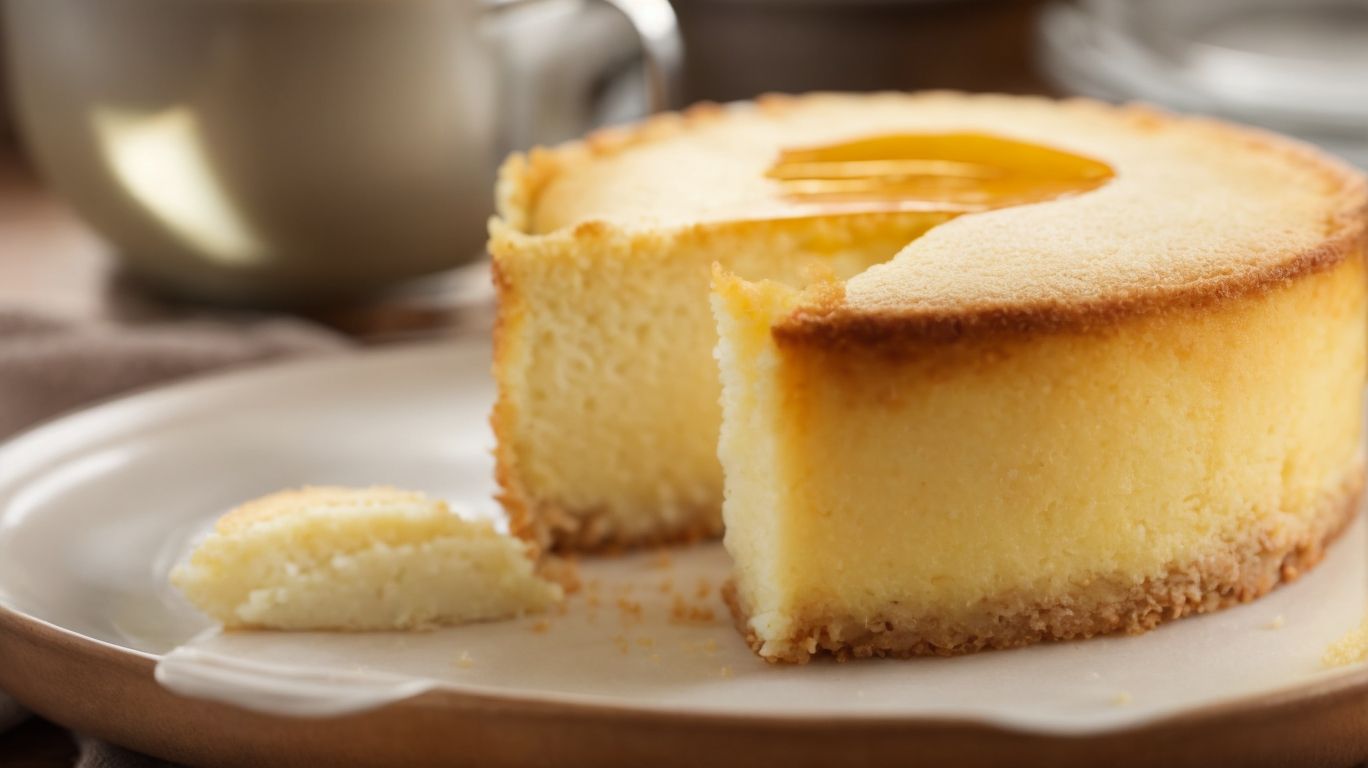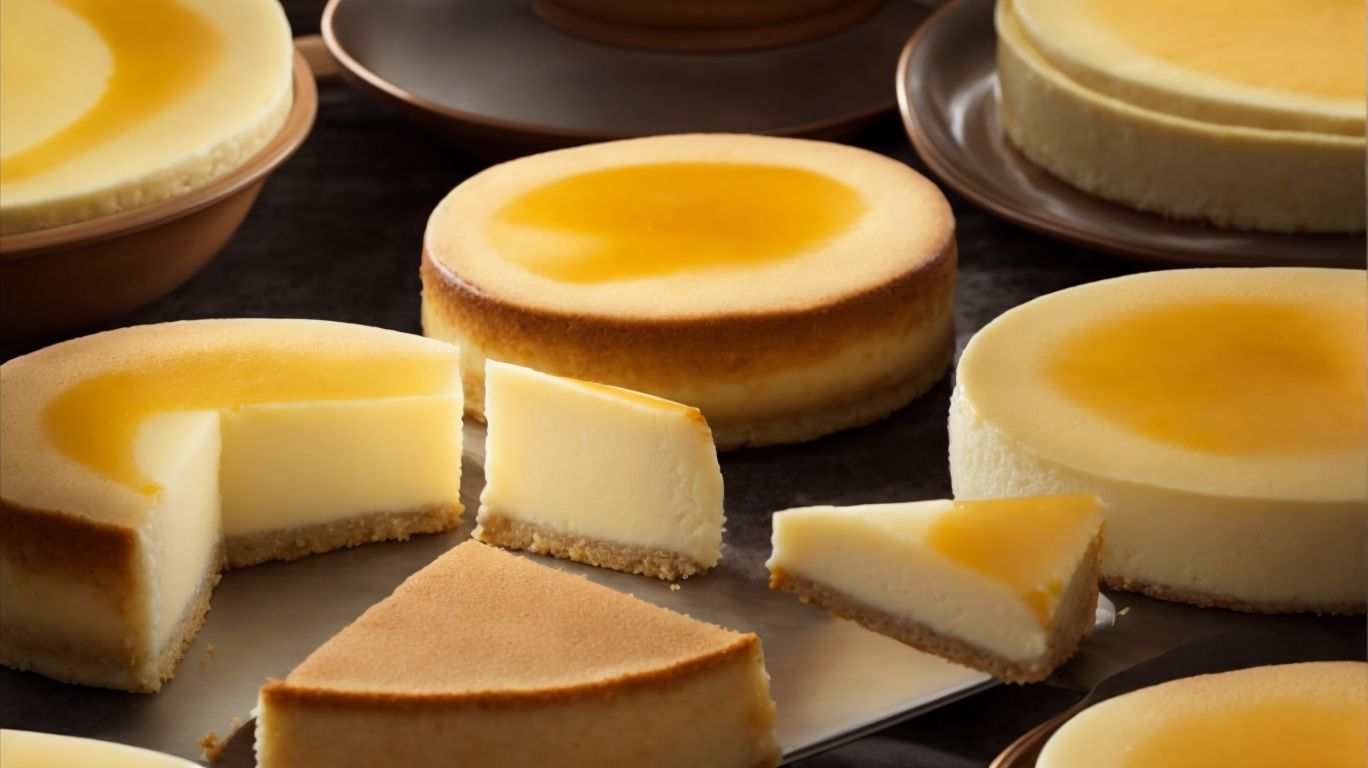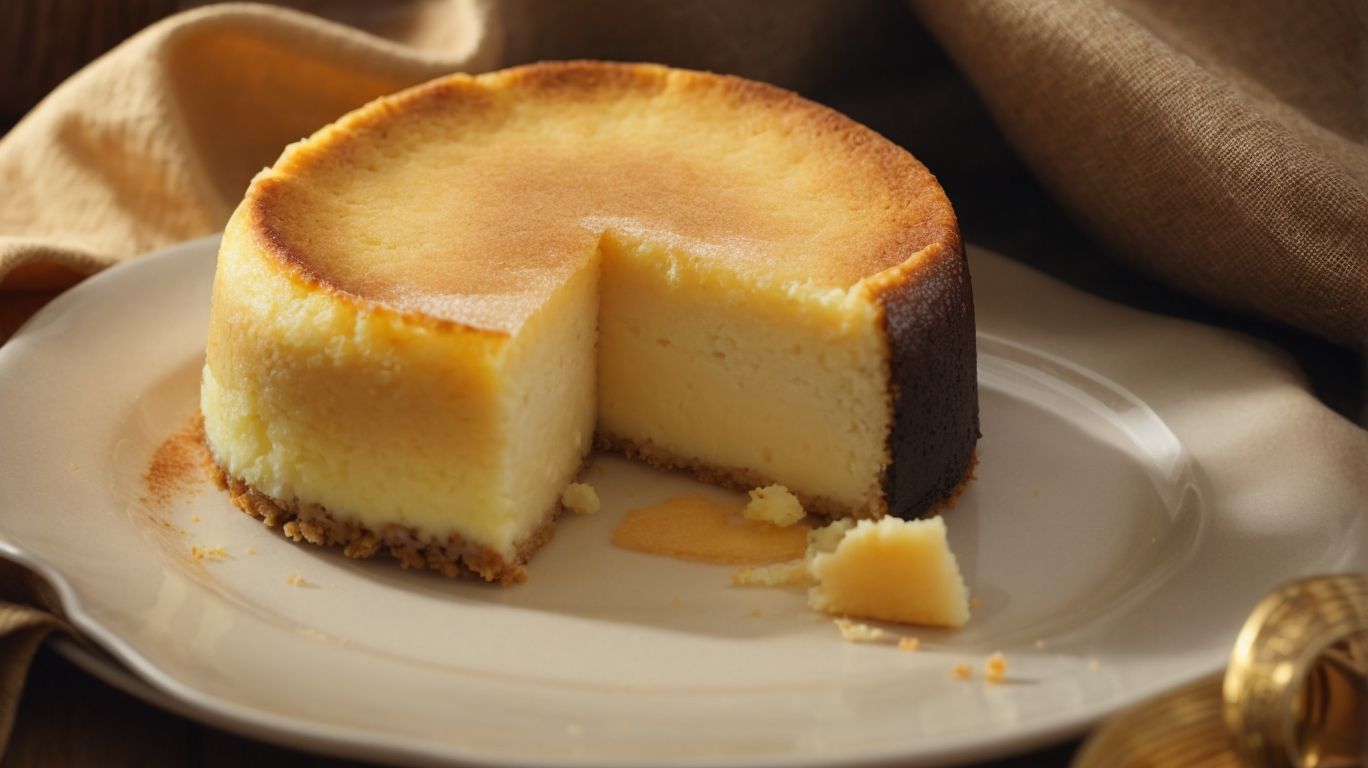How to Bake Japanese Cheesecake Without Cracking?
Are you tired of your cheesecakes cracking every time you bake them? Do you want to know the secret to making a perfect Japanese cheesecake that is light, fluffy, and crack-free?
In this article, we will explore the key differences between Japanese cheesecake and traditional cheesecake, the reasons why cheesecakes crack, and tips for preventing cracking.
We will also walk you through step-by-step on how to make a Japanese cheesecake without any cracks, and give you tips on serving and storing this delicate dessert.
So, let’s get baking and enjoy a flawless Japanese cheesecake every time!
Key Takeaways:
What Makes Japanese Cheesecake Different from Traditional Cheesecake?
Japanese Cheesecake sets itself apart from traditional cheesecake with its distinct texture. It is known for being incredibly light, fluffy, and airy compared to the denser versions found in traditional recipes. The key to achieving this unique texture lies in the specific ingredients used, such as Philadelphia cream cheese and a combination of cake flour and cornstarch. The baking method for Japanese cotton cheesecake also differs, resulting in a delicate and moist cake that melts in your mouth.
”
}
Japanese cheesecakes are often characterized by a delicate jiggle and a smooth, velvety mouthfeel. On the other hand, traditional cheesecakes have a denser, thicker consistency, often made with cream cheese and sometimes sour cream or heavy cream.
- While Japanese cheesecakes focus on achieving a light and airy texture through techniques like folding whipped egg whites into the batter, traditional cheesecakes prioritize a rich and creamy consistency, often with a graham cracker crust for added crunch.
- The use of a water bath during baking is common for traditional cheesecakes to prevent cracking, whereas Japanese cheesecakes are often baked without a water bath to maintain their fluffy and jiggly nature.
The overall result is that Japanese cheesecakes offer a delightful contrast of textures, with a soft, almost soufflé-like interior that is both decadent and light at the same time.
Why Do Cheesecakes Crack?

Credits: Poormet.Com – Ryan Williams
Cracking in cheesecakes occurs due to various factors that impact the texture and baking process.
Surface cracking is a common issue that results from temperature fluctuations or improper baking techniques. When the cheesecake undergoes rapid temperature changes during baking or cooling, it can lead to cracks on the surface.
Cracking tips include allowing the cheesecake to cool gradually by turning off the oven and letting it sit inside for some time before removing it. Avoid overmixing the batter to prevent incorporating excess air, which can contribute to cracking. By following these cracking tips and avoiding cracks, you can achieve a perfectly smooth and creamy cheesecake.
Tips for Preventing Cheesecake from Cracking
Preventing cracks in your cheesecake is crucial for achieving a flawless dessert. Utilizing a water bath during the baking process can help regulate the temperature and minimize sudden fluctuations that lead to cracking.
Water baths are a lifesaver when it comes to baking cheesecakes perfectly. The gentle heat from the water ensures that the temperature around the cheesecake remains constant, preventing it from drying out or cracking. It’s like creating a cozy environment for your dessert to slowly bake and set without any stress.
Temperature control is another key player in the game of crack-free cheesecakes. Avoid sudden temperature changes by allowing your ingredients to come to room temperature before mixing them. This gradual blending of flavors and textures helps the cheesecake batter achieve that velvety smoothness.
Choosing the right ingredients is like selecting the perfect team for a mission. Opt for high-quality cream cheese, fresh eggs, and a good quality vanilla extract to ensure a rich and creamy cheesecake that holds its shape. These ingredients not only contribute to the flavor but also play a crucial role in the structural integrity of your dessert.
Use Room Temperature Ingredients
One crucial tip to prevent cheesecake cracking is to use room temperature ingredients.
When ingredients like cream cheese and eggs are at room temperature, they blend more smoothly into the batter, creating a consistent texture that reduces the risk of cracks during baking. Room temperature ingredients also help in achieving a velvety smooth cheesecake filling. The warmth of the ingredients ensures they are more pliable, allowing for better incorporation of air during mixing, resulting in a lighter and creamier consistency. This method not only prevents cracks but also promotes an even distribution of flavors throughout the dessert.
Don’t Overmix the Batter
Overmixing the cheesecake batter can lead to structural issues that affect the final texture and stability of the dessert. It’s essential to mix the ingredients until just combined to avoid incorporating excess air, which can cause the cheesecake to crack during baking.
When the batter is overmixed, the excess air trapped in the mixture results in a puffed-up, fragile cheesecake that is prone to collapsing and cracking once it starts cooling. This affects not only the appearance but also the overall texture and taste of the dessert. To maintain the integrity of the cheesecake, it is crucial to gently fold in the ingredients, ensuring that everything is evenly distributed without overworking the mixture.
Use a Water Bath
Using a water bath is a proven technique to prevent cheesecake cracking during baking. The gentle, indirect heat provided by the water bath helps maintain a consistent temperature around the cheesecake, ensuring even baking and a smooth texture without any cracks.
The moisture from the water bath creates a humid environment in the oven, which prevents the surface of the cheesecake from drying out too quickly and cracking. This moisture also contributes to the creamy and velvety texture of the cheesecake, making it denser and richer.
The gentle and uniform heat distribution from the water bath minimizes the risk of overcooking the edges while the center remains undercooked, resulting in a perfectly baked cheesecake with a consistent texture throughout.
Bake at a Lower Temperature
Baking your cheesecake at a lower temperature can help reduce the risk of cracking while ensuring a smooth and stable texture. Lower temperatures allow the cheesecake to bake more evenly without experiencing sudden changes that could lead to cracks on the surface.
Baking at lower temperatures also helps in retaining the creamy consistency of the cheesecake, providing a velvety texture that is irresistible to the palate. By avoiding high temperatures, you give the cheesecake ample time to set gently and uniformly, resulting in a dessert that is both visually appealing and heavenly in taste.
One key advantage of this method is the gradual solidification of the cheesecake mixture, which leads to a luxurious mouthfeel and a decadent experience with each bite. For a flawless dessert, consider experimenting with different baking temperatures and durations to find the perfect balance for your ideal cheesecake.
Let the Cheesecake Cool Gradually
Allowing the cheesecake to cool gradually after baking is essential to prevent sudden temperature changes that could lead to cracking. By letting the dessert cool in the turned-off oven or on a wire rack, you ensure that the texture remains stable and smooth without any surface cracks.
This gradual cooling process is crucial as it allows the cheesecake to set properly, minimizing the risk of structural imperfections. With the slow cooling method, the residual heat gently firms up the cheesecake, resulting in a lusciously creamy interior. A gentle cooling process helps the dessert avoid the dreaded sinkholes and ensures a velvety consistency throughout. By maintaining patience and not rushing this step, you are safeguarding the integrity of your cheesecake and setting the stage for a perfect presentation.
How to Make Japanese Cheesecake without Cracking?

Credits: Poormet.Com – Benjamin Jones
Creating a Japanese Cheesecake without cracking requires attention to detail and precision in the baking process. From selecting the right ingredients to mastering the baking technique, each step plays a crucial role in achieving the light and airy texture that defines this Japanese-style dessert. By following a carefully crafted recipe and implementing specific tips to prevent cracking, you can enjoy a flawless Japanese Cheesecake that delights your taste buds.
One essential technique to prevent cracking is to bring all ingredients to room temperature before starting the baking process. This ensures a smoother blending of ingredients, resulting in a uniform batter consistency.
When folding in the whipped egg whites, do so gently to maintain the volume and airiness of the mixture. Patience is key when baking a Japanese Cheesecake; avoid opening the oven door frequently to prevent sudden temperature changes that can cause cracks to form.
Using a water bath or bain-marie technique during baking helps regulate the oven’s heat and creates a moist environment, promoting an even rise and preventing cracks in the delicate cheesecake.
Prepare the Ingredients
The first step in making a Japanese Cheesecake without cracking is to meticulously prepare the ingredients. Ensure that your cream cheese, eggs, and other components are at the right temperature and consistency to achieve the desired texture and prevent any cracking during baking.
Before starting, make sure to bring all ingredients to room temperature to ensure even mixing and smooth batter consistency. Cream cheese must be soft and smooth without any lumps. Separate your eggs while they are still cold, allowing them to come to room temperature before use for optimal volume in the final cake. Use high-quality ingredients as their freshness and quality play a significant role in the overall taste and texture of the cheesecake.
Make the Batter
Creating a smooth and well-mixed batter is crucial for Japanese Cheesecake to avoid cracking and ensure a light texture. Follow the recipe instructions meticulously, and be cautious not to overmix the batter, as this could introduce air pockets that lead to cracks during baking.
When preparing the batter, it is recommended to use room temperature ingredients as they blend more easily, resulting in a uniform consistency. Incorporating ingredients gradually, such as adding small amounts of flour at a time, helps maintain an even mixture without overworking it. Gently folding in ingredients like whipped egg whites can contribute to a fluffy and airy texture. The batter should be velvety and free of lumps for the best outcome.
Bake the Cheesecake
The baking process is critical in achieving a crack-free Japanese Cheesecake. To prevent cracking, ensure your oven temperature is accurate, use a water bath for even heat distribution, and avoid sudden temperature changes that could impact the dessert’s texture. Follow the recommended baking time and technique for the perfect result.
It is essential to preheat your oven to the correct temperature before placing the Japanese Cheesecake inside. This ensures even baking and helps in avoiding rapid temperature fluctuations. Wrapping the springform pan with parchment paper can further prevent cracks by acting as an insulation layer. While baking, be mindful not to overmix the batter, as this can lead to excess air incorporation, causing the cheesecake to rise unevenly and potentially crack. Implementing these precautions will contribute to a flawlessly baked Japanese Cheesecake.
Cool and Chill the Cheesecake
Once the Japanese Cheesecake is baked, allow it to cool and chill properly to set the texture and prevent cracking. Gradual cooling helps stabilize the dessert, while chilling in the refrigerator enhances the flavors and ensures a smooth consistency that delights with every bite.
For optimal results, after removing the cake from the oven, place it on a wire rack to cool gradually. This gradual cooling process prevents sudden temperature changes that could lead to cracking. Once the cake reaches room temperature, transfer it to the refrigerator for chilling. Experts recommend refrigerating the cheesecake for at least 4 hours or overnight to allow the flavors to meld and the texture to set completely.
Tips for Serving and Storing Japanese Cheesecake

Credits: Poormet.Com – Dennis Allen
Serving and storing Japanese Cheesecake requires attention to detail to preserve its delicate texture and flavor. Use a hot knife for clean slices that maintain the dessert’s structure, store leftovers in the refrigerator to maintain freshness, and consider freezing portions for longer storage while retaining the airy and moist qualities of this delightful dessert.
When cutting the cheesecake, dip the knife in hot water before each slice to ensure a smooth cut without squishing the layers. This trick helps in achieving those picture-perfect slices. For storing leftovers, wrap the cheesecake in plastic wrap or place it in an airtight container to prevent it from absorbing other odors in the fridge.
If you plan to freeze portions, it’s advisable to wrap individual slices in parchment paper followed by aluminum foil to maintain texture and prevent freezer burn.
Before serving frozen slices, allow them to thaw in the refrigerator overnight for the best taste and texture. Avoid thawing at room temperature to preserve the integrity of the cheesecake.
Use a Hot Knife for Clean Slices
Achieving clean slices of Japanese Cheesecake is essential for serving and maintaining the dessert’s delicate texture. Using a hot knife to slice through the cake ensures smooth edges and preserves the airy structure, enhancing the visual appeal and overall presentation.
The process of slicing Japanese Cheesecake with a hot knife not only helps in maintaining its fluffy and light consistency but also prevents the cake from crumbling or sticking to the blade.
By heating the knife, you create a clean cut that glides through the soft cake, leaving behind sharp edges that look appealing when served on plates or platters.
Consistent, neat slices elevate the dessert’s aesthetic appeal and make each serving look professional and enticing to those indulging in this delectable treat.
Store in the Refrigerator
For optimal freshness and texture retention, store your Japanese Cheesecake in the refrigerator. Chilling the dessert helps maintain its airy and moist qualities, ensuring each slice delights with its lightness and creamy flavor. Proper refrigeration also extends the shelf life of the cheesecake for future enjoyment.
When refrigerating Japanese Cheesecake, the cool temperature slows down the development of any spoilage-causing organisms, keeping the cake fresh for longer periods. The refrigeration process aids in the crystallization of fats within the cake, contributing to its smooth and velvety texture.
By refrigerating your Japanese Cheesecake, you not only protect it from potential spoilage but also enhance its flavors as the cold environment helps the cake to set properly, further deepening its rich taste.
Freeze for Longer Storage
When looking to extend the storage life of your Japanese Cheesecake, consider freezing portions for longer-term enjoyment. Freezing the dessert helps maintain its unique texture and prevents any loss of flavor, allowing you to savor the delightful qualities of this Japanese-style treat at your convenience.
When freezing Japanese Cheesecake, it’s important to do it correctly to preserve its delicate qualities. Start by cutting the cheesecake into individual portions for easier freezing and serving. Wrap each portion tightly in plastic wrap to prevent freezer burn and then place them in an airtight container or freezer-safe bag to further protect the dessert.
For optimal results, place the container in the coldest part of your freezer to maintain the cheesecake’s texture. In terms of thawing, transfer the portions to the refrigerator and let them slowly defrost overnight. This gradual thawing process helps retain the original flavors and consistency of the cheesecake.

